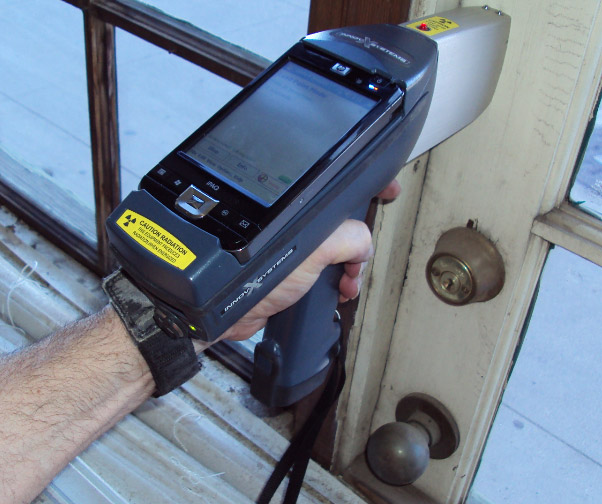Ideal Practices for Guaranteeing Safe and Detailed Lead Violation Reduction
Attending to lead infraction abatement requires a multi-faceted strategy to ensure both safety and conformity. It's the last clearance process, involving comprehensive inspections and laboratory screening, that genuinely verifies a lead-free environment, ensuring lasting safety and security. Exactly how do these practices adjoin to assure detailed lead abatement?

Initial Analysis
Carrying out an initial analysis is an essential very first step in lead offense abatement. This stage includes a detailed evaluation of the residential or commercial property to recognize the existence, extent, and certain locations of lead-based threats. Qualified specialists, such as licensed lead inspectors or run the risk of assessors, should do a comprehensive website inspection, using devices like X-ray fluorescence (XRF) analyzers to precisely identify and determine lead focus in paint, dust, dirt, and water.
The assessment needs to additionally include a testimonial of the building's history, previous records, and any grievances or wellness issues reported by passengers - Lead Removal Contractors. Recording the findings thoroughly is important, as these documents form the basis for establishing a reliable reduction strategy. A detailed assessment additionally involves sampling and lab evaluation, which are critical to verify the existence of lead and overview succeeding activities
Furthermore, it is imperative to communicate the results transparently to all stakeholders, consisting of homeowner, renters, and regulative authorities. By making sure that the first analysis is performed with accuracy and roughness, professionals can lay a solid structure for a targeted and efficient lead abatement process, eventually protecting public health and wellness and making sure conformity with regulative requirements.
Appropriate Containment
Appropriate containment is important to stop the spread of lead pollutants throughout abatement activities. Effectively managing control decreases the threat of lead dirt and debris migrating to non-work areas, thereby safeguarding both the setting and people outside the instant work zone. To attain correct control, an airtight barrier of plastic bed linen have to be developed around the workspace, ensuring all joints and edges are securely sealed. Lead Removal Contractors. This obstacle ought to extend from flooring to ceiling and be taped to stop any type of leaks.

Normal evaluations of the control area are essential to inspect for violations or weaknesses in the obstacle. Any type of identified problems need to be immediately addressed to preserve the honesty of the containment. By sticking to these practices, abatement tasks can efficiently manage lead contamination and mitigate involved health and wellness dangers.
Employee Protection
Making certain worker security is paramount during lead reduction tasks to stop job-related direct exposure to dangerous lead bits. Essential steps consist of the usage of individual protective devices (PPE) such as respirators, handwear covers, and full-body matches especially developed to block lead dirt and fumes. Employees need to undergo extensive training on the right use and upkeep of PPE, including fit testing for respirators to guarantee maximum effectiveness.
Design controls, such as neighborhood exhaust air flow systems, are crucial in reducing airborne lead advice concentrations in the workplace. Administrative controls must additionally be applied, consisting of restricting the period of direct exposure and revolving employees to lower specific direct exposure times. Normal clinical security and organic surveillance are crucial for very early discovery of lead absorption, making it possible for prompt treatment and treatment.
Additionally, establishing a decontamination protocol is important. Workers must comply with strict decontamination procedures before breaks and at the end of their change to avoid this website lead dirt from being lugged outside the workplace. This includes comprehensive hand and face washing with lead-specific cleaner and altering out of polluted clothing.
Meticulous Cleaning
Preserving a risk-free workplace prolongs beyond employee defense and includes meticulous cleaning to make sure lead particles are thoroughly gotten rid of from the site. The process of careful clean-up is crucial in protecting against the recontamination of the mellowed out area and safeguarding both present and future residents.
To attain a detailed cleanup, all workspace need to be systematically sanitized. This involves making use of specialized HEPA (High-Efficiency Particulate Air) vacuum and wet-wiping techniques to record and remove great lead dirt that may have decided on surface areas. It is crucial to clean all horizontal surface areas, including floorings, home window sills, and counter tops, along with upright surfaces that might have entraped lead bits.
Employees must use ideal personal protective tools (PPE) throughout cleanup to prevent direct exposure to residual lead dust. Utilized cleansing materials such as wipes, sponges, and mop heads must be dealt with according to contaminated materials disposal policies.

Last Clearance
Last clearance is the Recommended Reading crucial concluding phase of lead abatement that determines whether the site is safe for reoccupation. This crucial step involves extensive evaluation and testing to verify that all lead hazards have been effectively eliminated.

Final clearance screening not just secures future residents but additionally makes certain conformity with local, state, and government guidelines. Furthermore, it functions as a recorded validation of the reduction specialist's adherence to market best techniques. Guaranteeing a thorough and effective final clearance is crucial in securing public health and cultivating rely on the reduction process.
Verdict
Guaranteeing secure and extensive lead violation reduction necessitates a diverse approach including initial evaluations with innovative detection approaches, effective control strategies, rigid employee security protocols, and careful cleanup procedures. The last clearance phase, featuring in-depth inspections and lab screening, is essential to verify conformity with EPA standards. Adherence to these finest methods assures a safe atmosphere for passengers, minimizes health dangers, and maintains governing requirements, thus promoting public health and wellness and safety and security in lead-affected locations.
Comments on “Expert Lead Paint Removal Company-- Serving All NYC Boroughs”